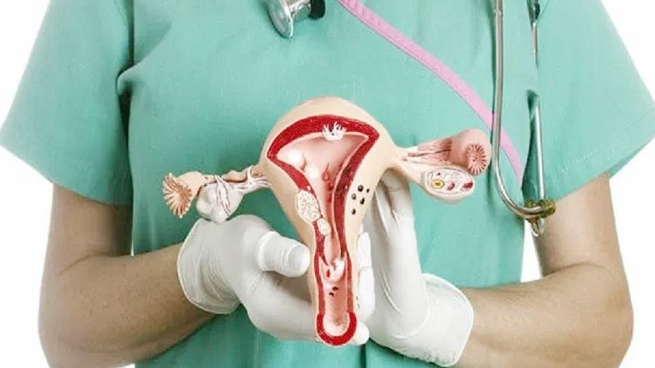Cervical cancer is preventable in 93% of cases through vaccination against the HPV virus and periodic gynecological check-ups that detect precancerous lesions, for which it is called to become the first oncological disease to be eradicated in the history of humanity, according to specialists in the framework of the World Day for its prevention, which is commemorated every March 26.
In fact, this is what the 194 countries that make up the World Health Organization (WHO) committed to in 2020 when they adopted the Global Strategy to Accelerate the Elimination of Cervical Cancerwhat’s wrong with it as a goal for 2050 reduce more than 40% of new cases and avoid 5 million deaths.
In Argentina, uterine cancer registered 4,500 new cases in 2018 and produced 2,050 deaths that same year, according to official data.
“The particularity of this cancer is that it is absolutely preventable through primary prevention – vaccination – and secondary – visiting the gynecologist and performing the Pap smear or the Human Papilloma Virus (HPV) test -“, he told Télam. medical doctor and president of the Argentine Society for the study of Human Papilloma VirusSilvio Tatti.
? 93% of cervical cancer cases can be prevented by performing gynecological control once a year. The vaccine does not replace the annual control, nor does it supplant any of these studies.
Do your checkups, a study on time saves lives ?
– LALCEC Argentina (@LalcecArgentina) March 23, 2022
Instead, other cancers that affect cisgender women, trans men or non-binary people, such as breast cancer, can only be targeted for secondary prevention because “you can detect it early but not prevent it from appearing”affirmed the head of the Oncology department of the Raffo Institute, Valeria Cáceres, in statements to Télam.
According to the Centers for Disease Control and Prevention in the United States, “up to 93% of cervical cancers could be prevented with HPV screening and vaccination” so “no woman should die from this sickness”.
“Cervical cancer would be the first cancer to be eradicated, given these characteristics, and, for this, it will be necessary to make an effort basically in the field of health,” added Tatti, who is also a full professor of the first chair of Gynecology of the Clinical Hospital.
In turn, the coordinator of the psychosocial area of the Argentine League to Fight Cancer (Lalcec), Carlos Silva, assured that, “in the case of precancerous lesions, the cure is 100% following the indicated treatment” and pointed out that even “carcinoma in situ, that is, the one that does not metastasize, is curable with surgery”.
The good news, he said, is that “it is four times more frequent than invasive cancer”, which is more aggressive.
The possibility of eradicating cervical cancer is due to the fact that in 97% is a consequence of HPVa sexually transmitted virus with which 80% of men and women will have had contact two years after beginning sexual intercourse, but “in most cases, the immune system resolves it and the virus disappears as appeared” without producing a tumor, Silva explained.
“Less than 3% of uterine cancer cases are due to causes other than infection with the human papillomavirusand, in cases where they are linked to HPV, this virus can be latent for many years and at a time when immunity decreases, generate lesions that, if not diagnosed and treated in time, lead to uterine cancer,” said Cáceres .
“But from an initial lesion, sometimes it can take up to 10 years for a carcinoma to develop because, first, the cells become inflamed, begin to grow and generate lesions that you can see perfectly through a PAP and identify before they transform. into a tumor,” he added.
HPV vaccine
The three specialists, on the other hand, assured that the debate on the safety and efficacy of the vaccine in favor of it is already fully settled.
“The toxicity that they can have is very low and when you measure cost/benefit, there is no doubt that the adverse effects are infrequent compared to the frequency of lethal diseases that it manages to avoid,” Silva said.
In Argentina, the vaccination strategy consists of a first dose for 11-year-old boys and girls and a second dose with a minimum interval of six months, and its application “is independent of having started sexual relations or not” although “the The optimal time of application is before the first sexual contact, due to the immune response and the lack of contact with HPV,” they explained.
Of the more than 150 HPV variants, these vaccines prevent infection with strains 16 and 18 which are responsible for 70% of cases of cervix.
“Argentina does not set an age limit for the application of the vaccine, but if the person missed the indicated age, they can still receive it for free. But, above 15 years of age, they have to receive three doses: 0.60 and 180 days,” explained Tatti.
“Cervical cancer would be the first cancer to be eradicated, and for this, it will be necessary to make an effort basically in the field of health”Silvio Tatti, president of the Argentine Society for the study of Human Papilloma Virus
Due to the fact that 30% of uterine cancers are caused by strains that the vaccine does not cover and that 3% of cases the disease is caused by causes other than HPV, the three specialists were very emphatic in pointing out that the Vaccination does not exempt women, trans men or non-binary people from having annual gynecological check-ups.
When HPV is not responsible for the disease, Tatti explained that the causes “may be genetic mutations, and also something that is being studied, vaginal dysbiosis, which is the abnormal modification of genital discharge that causes permanent inflammation and altered response immune, by the intervention of a germ that is gardenella vaginalis and some lactobacilli”.

Gynecological controls: HPV test, pap smear and colposcopy
Silva explained that “before there was regular control” – which included pap smears, colposcopy and, in some cases, HPV tests – “early lesions were difficult to find”, but that once they are diagnosed through these methods They have high chances of cure and survival.
In fact, deaths in the United States fell dramatically between 1975 and 2018 (from 5 to 1.8 per 100,000 women), and more than 50% of all new cases of cervical cancer occur in those who never have been screened or have not been screened in the past 5 years.
More innovative are the HPV tests that, for Tatti, “the trend is that over time they replace the PAP”.
While the papanicolau consists of scraping the cells of the cervix to detect abnormalities, “the test tells you who is positive for HPV” and the type of strain“and colposcopy allows visualization of the cervix to detect where in the lower genital tract there may be a precancerous lesion.”
“If the test says that you are a carrier (of the strains that can cause cancer) that does not mean that you are going to develop cancer but that you have to do annual controls and, on the other hand, if you are not a carrier, you can do a PAP every three years” Caceres said.
Tatti explained that These tests are already used in public hospitals in 8 provinces and 8 municipalities of the AMBA“as a routine through the distribution carried out by the Ministry of Health and the National Cancer Institute”, since they are not part of the PMO.
















